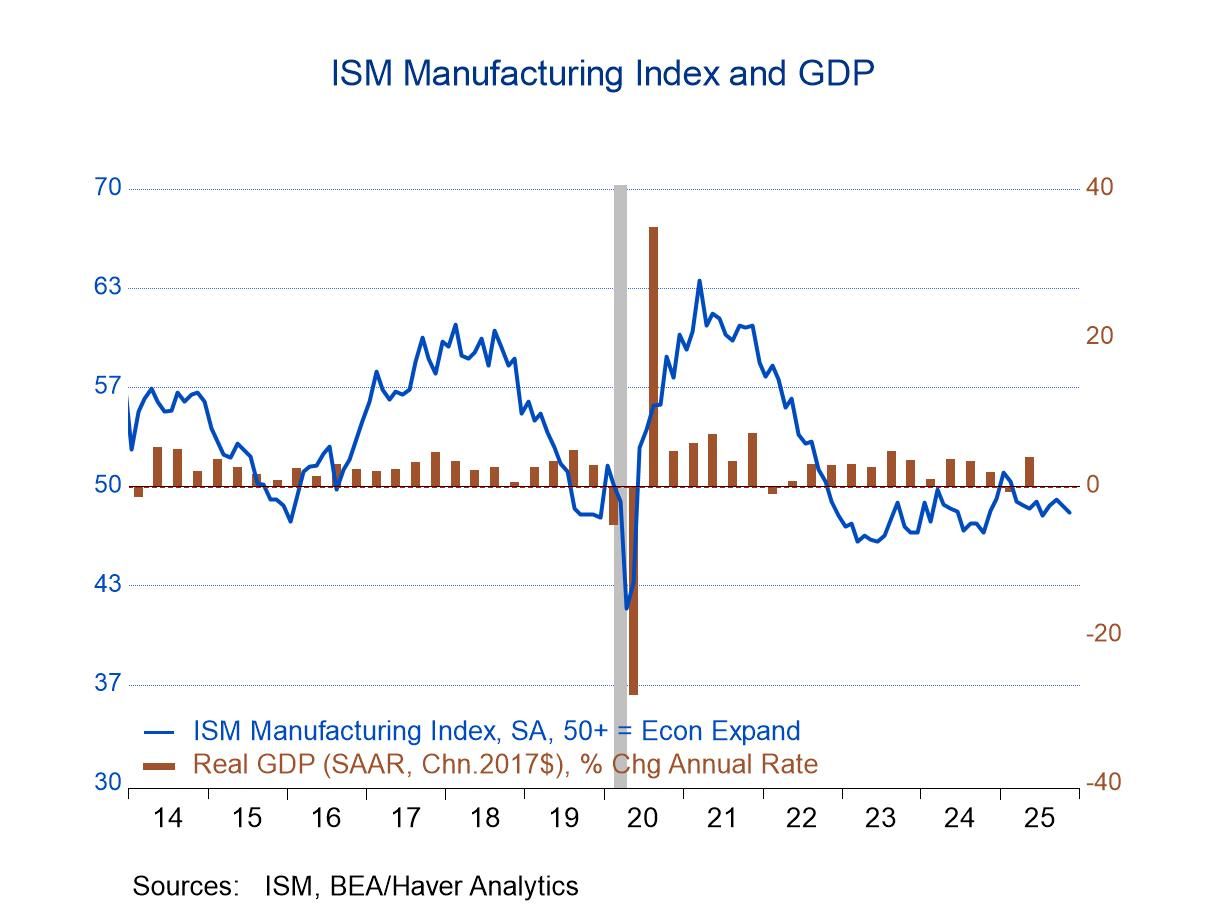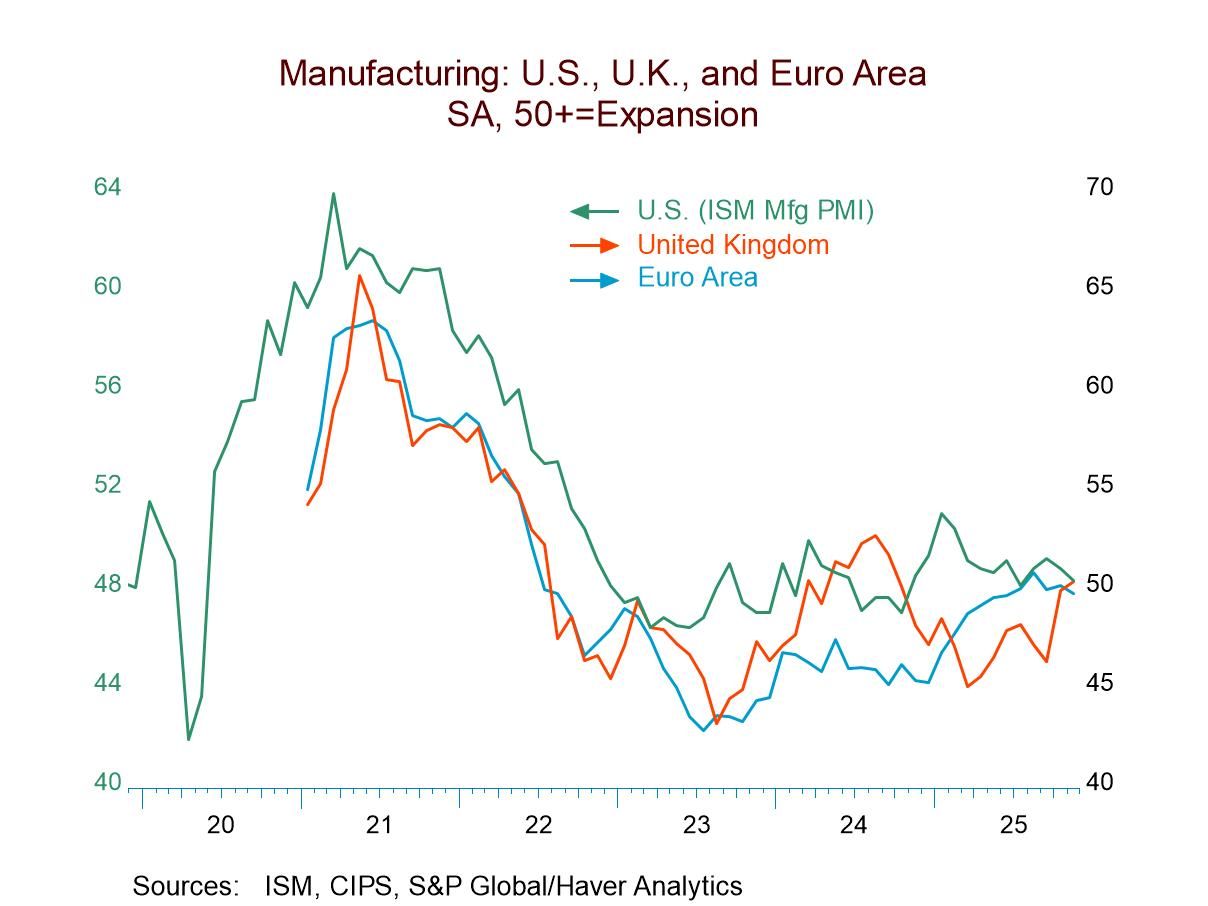 Global| Feb 25 2011
Global| Feb 25 2011UK GDP in Q4 Is Worse Than Expected
Summary
It was expected that GDP would be an upward revision and not a downward revision. There were some hopes that UK GDP would eliminate the decline in Q4 that was viewed as 'pre-mature.' Instead UK GDP has fallen by more in Q4 than had [...]
 It was expected that GDP would be an upward revision and not a downward revision. There were some hopes that UK GDP
would eliminate the decline in Q4 that was viewed as 'pre-mature.' Instead UK GDP has fallen by more in Q4 than had
originally been reported. Its annualized drop is -2.3% on a 0.4% decline in private consumption. And now the austerity
will kick in in Q1 of 2011. And on top of that the UK has an inflation overshoot. Some MPC members are getting jittery
about inflation after having ignored it or made excuses for it, for so long.
It was expected that GDP would be an upward revision and not a downward revision. There were some hopes that UK GDP
would eliminate the decline in Q4 that was viewed as 'pre-mature.' Instead UK GDP has fallen by more in Q4 than had
originally been reported. Its annualized drop is -2.3% on a 0.4% decline in private consumption. And now the austerity
will kick in in Q1 of 2011. And on top of that the UK has an inflation overshoot. Some MPC members are getting jittery
about inflation after having ignored it or made excuses for it, for so long.
Now the UK dilemma is that the Inflation is worse for longer than expected and economic growth is worse sooner than expected. This puts the government and the bank of England both in a difficult spot.
The Government has made its choice and called for the period of austerity under the view that the short term costs will be worth the longer term gains. The BOE has been of the opinion that the inflation overshoot might endure but would be undercut by weak growth. Instead, low growth, economic contraction, in fact, has been more severe than expected and has come sooner than expected but along with the consequence that inflation is worse and has been so for longer than expected as well. This is a double dip of a forecast error for the BOE. As a result it now has a growing schism on the Monetary Policy Committee.
The headline inflation rate is at neatly 8% over three-months annualized; it is up by 3.9% Yr/Yr. The core reading in the HICP is at 2.9% Yr/Yr and has 'only' accelerated to a 3.3% pace on data up to November 2010. This is with inflation ostensibly 'capped by policy at 2%.
Put headline inflation aside; HICP core inflation reached 2% (12-mo) in April and May of 2008. Since then over the next 30 months inflation has been over the 2.0% mark in all but seven of them. That is a pretty consistent and persistent overshoot. Of these, 17 months produced inflation that was more than 0.5% points above the 2% maximum.
So far the UK inflation problem has showed that it is more a problem of the headline but few items show inflation under control. Ominously, leisure goods prices are lower over 12-months and that speaks more to the growing forces of weakness than to inflation being tempered in some sectors. Because of energy costs motoring expenditures are up at a 21% annualized rate in the RPI over three-months.
On the GDP front Yr/Yr GDP growth is down to 1.5% in Q4 from 2.5% in Q3 a sharp slowdown for a Yr/Yr rate in only one quarter. Exports continue to be a driving force behind UK GDP, up at a 9.4% annual rate in the quarter and by 6.4% Yr/Yr. But international trade overall is still a subtraction from growth. Imports are stronger-still, up at 12.3% growth rate in Q4 and up by 9% Yr/Yr.
Public spending is still the mainstay of growth in Q4 up at a 2.8% pace and up by 1.2% Yr/Yr. Still imports are very strong given that domestic demand fell by 1.1% in Q4 and advanced by just 2.7% Yr/Yr.
There is nothing very encouraging in the GDP report. GfK reported out a UK consumer confidence figure for February which advanced to -28 from a reading of -29 in January. That's pretty thin on the good-news front. UK economic data have been mercurial with some measures shooting up only to fall again sharply. It has been a hard economy to get a reading on and weather has battered the UK severely. There may still be some respite from these most dismal figures if Mother Nature proves to be a significant culprit. It's about the only silver lining we can get for the UK right now and that is not much.
| UK GDP and Components | ||||||||
|---|---|---|---|---|---|---|---|---|
| Consumption | Capital Formation | |||||||
| GDP | Private | Public | Fixed | Housing | Exports | Imports | Domestic Demand |
|
| % Change Q/Q | ||||||||
| Q4-10 | -2.3% | -0.4% | 2.8% | -9.5% | #N/A | 9.4% | 12.3% | -1.1% |
| Q3-10 | 2.8% | 0.2% | -1.3% | 15.5% | 15.9% | 6.9% | 6.7% | 3.0% |
| Q2-10 | 4.2% | 1.9% | 1.2% | 4.6% | 30.0% | 13.0% | 7.8% | 3.4% |
| Q1-10 | 1.3% | -0.1% | 2.0% | 13.9% | 3.2% | -3.1% | 9.2% | 5.6% |
| % Change Yr/Yr | ||||||||
| Q4-10 | 1.5% | 0.4% | 1.2% | 5.6% | #N/A | 6.4% | 9.0% | 2.7% |
| Q3-10 | 2.5% | 1.5% | 0.9% | 6.7% | 8.6% | 7.8% | 10.2% | 3.7% |
| Q2-10 | 1.5% | 1.4% | 1.1% | 3.0% | 6.4% | 7.0% | 9.7% | 2.8% |
| Q1-10 | -0.3% | 0.2% | 0.9% | -2.7% | -5.0% | 1.9% | 5.2% | 1.0% |
| 5-Yrs | 0.2% | 0.2% | 1.2% | -1.3% | #N/A | 0.2% | 0.2% | 0.3% |
Robert Brusca
AuthorMore in Author Profile »Robert A. Brusca is Chief Economist of Fact and Opinion Economics, a consulting firm he founded in Manhattan. He has been an economist on Wall Street for over 25 years. He has visited central banking and large institutional clients in over 30 countries in his career as an economist. Mr. Brusca was a Divisional Research Chief at the Federal Reserve Bank of NY (Chief of the International Financial markets Division), a Fed Watcher at Irving Trust and Chief Economist at Nikko Securities International. He is widely quoted and appears in various media. Mr. Brusca holds an MA and Ph.D. in economics from Michigan State University and a BA in Economics from the University of Michigan. His research pursues his strong interests in non aligned policy economics as well as international economics. FAO Economics’ research targets investors to assist them in making better investment decisions in stocks, bonds and in a variety of international assets. The company does not manage money and has no conflicts in giving economic advice.






